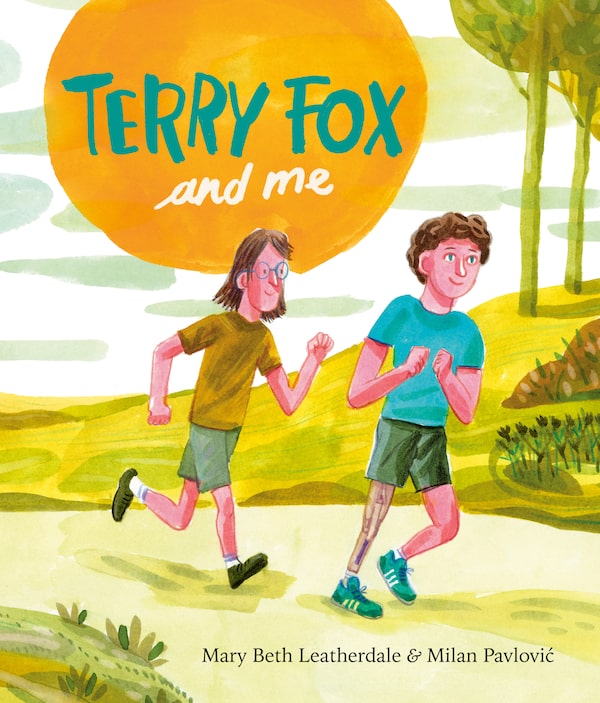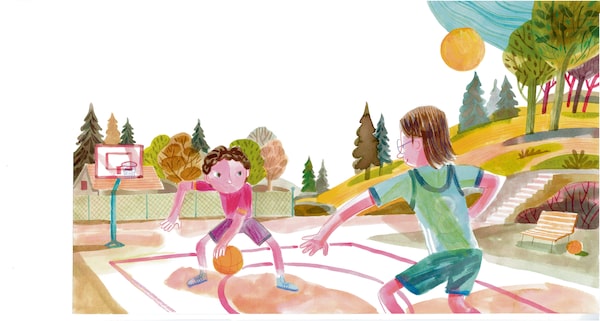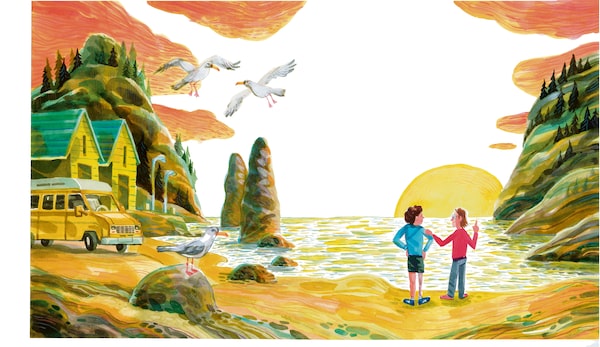
Speaking about the Ford E250 Econoline camper that escorted Terry Fox on his Marathon of Hope in 1980, brother Darrell Fox once said, “You open the doors of that van and the stories just flow out.”
Fox, a runner with an iron will and a leg of fibreglass and steel, died of cancer on June 28, 1981. The stories haven’t stopped. Some mileage.
A pair of new books will mark the 40-year anniversary of Fox’s attempted run across the country. First up is Terry Fox and Me, a children’s picture book published by Tundra Books, due out on Tuesday. The “me” is Fox’s childhood friend Doug Alward, who joined the two brothers for the trip westward from St. John’s to raise money for the Canadian Cancer Society.
“It’s a story of a journey,” author Mary Beth Leatherdale says. “Two boyhood friends set out to do the impossible. Even though they had different personalities, look what they achieved.”
The story begins at the Mary Hill Junior High School basketball tryouts in the British Columbia city of Port Coquitlam. Fox isn’t much of a player. He befriends Alward and gets better.
Mary Hill basketball team, 1972. Doug is #13; Terry is #15.
The pair drift apart a little as they get older. Introverted Alward is a long-distance runner. The more outgoing Fox, ironically enough as it turns out, doesn’t care much for cross-country. But he calls his friend the night before a big high-school race. “Just do your best, Doug,” he says. “One step at a time.”
Another book, Forever Terry: A Legacy in Letters (due Sept. 1, from Penguin Canada) features 40 letters by 40 prominent Canadians reflecting on Fox’s life and legacy. Contributors include writer Margaret Atwood, basketball’s Steve Nash, singer Jann Arden, athlete and activist Rick Hansen and hockey’s Bobby Orr.
Orr recounts a story about a lunch with Fox in Toronto. The two compared injured legs. “I got to see what he was using for a right leg,” Orr writes. “It was a very sobering moment. I remember thinking how courageous this young man must be, given the difficulty of running with that artificial limb. And for that one moment in time, my surgeries weren’t that important, and those scars that marked my knee didn’t seem so daunting.”

The aim of Terry Fox and Me is to inspire.Milan Pavlović/penguin random house
The story of Fox’s short life has been told countless times in books, movies and, in 2016, a stage play. Orr’s anecdote jibes with a scene from 2016′s Marathon of Hope: The Musical by John Connelly and David Connelly. In it, a reporter on hand for the launch of Fox’s journey asks the 21-year-old why he was wearing shorts in Newfoundland in April. “I want people to see the leg,” the Fox character says. “That’s the whole point.”
As with the musical and most all Fox stories, the aim of Terry Fox and Me is to inspire. Illustrated by Milan Pavlovic, the book takes young readers through the loss of Fox’s right leg to osteosarcoma to the preparation for his coast-to-coast try.
Included is a training journal from Jan. 28, 1980, 2½ months before the Marathon of Hope would begin. A gruelling regimen started with a granola breakfast, followed by a 24 kilometre run. For lunch, a Coke and four pieces of toast. Then a dozen more kilometres. Supper consisted of fish, corn, potatoes and ice cream. Weight training to strengthen his back preceded a session of wheelchair basketball. (He played on three national championship teams.) He was in bed by 11:15 p.m.

Terry Fox and Me takes young readers through the loss of Fox’s right leg to osteosarcoma to the preparation for his coast-to-coast try.Milan Pavlović/penguin random house
Terry Fox and Me ends as the attempt to traverse Canada begins. Fox would make it as far as Thunder Bay. He learned the cancer had spread to his lungs.
”Even if I don’t finish, we need others to continue,” Fox said during a Toronto stop on his run. “It’s got to keep going without me.”
It did, and does.
Expand your mind and build your reading list with the Books newsletter. Sign up today.